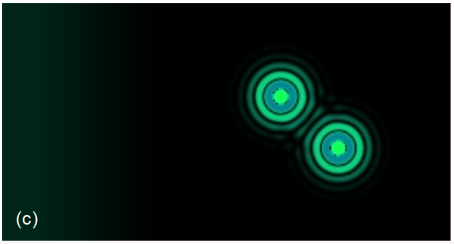Subquantum kinetics: simulating subatomic particles in Model G with fluid dynamics
Subquantum kinetics: simulating subatomic particles in Model G with fluid dynamics
By Brendan J. Darrer, Justin Coven and Paul A. LaViolette
Abstract—Subquantum kinetics is a methodology that seeks to represent quantum structures, such as particles and waves, as emergent phenomena generated by the operation of an underlying nonlinear open reaction-diffusion medium. The current model of choice for representing these subquantum processes is a three variable Brusselator-like reaction diffusion system called Model G. Here Model G, with Navier-Stokes relations included in its partial differential equations, is simulated in 1d and 2d using Tensorflow 2 code. We show that, when a zero-point electric potential fluctuation, χ, is added at the beginning of the simulation, Model G is able to generate concentration inhomogeneities in its three variables X, Y, and G which configure themselves into stable dissipative solitons resembling neutrons, the X and Y variables being analogs of the electric potential and G of the gravitational potential. We
show that these solitons are able to accelerate down gravity gradients and elastically collide with one another. In future research we intend to demonstrate vortical motion and particle diffraction. Also we have plans to adapt this code to create a 3d particle.
Index Terms—Subquantum kinetics, Model G, solitons, subatomic particles, spin, Tensorflow 2.
